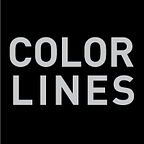Gabriella Cazares-Kelly, a community organizer from the Tohono O’odham Nation, presents three best practices for White allies trying to meaningfully engage with people from underrepresented groups at meetings, protests and events.
Photo: Via the Indivisible Tohono Facebook page
By Gabriella Cazares-Kelly
April 26, 2018
I am a community organizer for a grassroots organization serving the Tohono O’odham Nation, a Native American community that you’ve likely never heard of. My reservation is located in Arizona and is the size of Connecticut, but even most Arizonans are unaware of our existence. My organization, Indivisible Tohono, encourages civic engagement and education within the Tohono O’odham Nation, because O’odham voices have been largely disregarded and dismissed by the mainstream society. In short, we’re underrepresented in every way imaginable.
My work has pushed me to get more involved in the mainstream political arena. More and more I am finding myself in traditionally White spaces — board meetings, town halls, candidate forums, and Democratic Party meetings. I can also be found at protests and rallies, where I’m rubbing elbows with people I’d like to believe are like-minded.
But the sting of underrepresentation is ever-present and usually shows up in the form of microaggressions or unknowingly racist comments.
Often, White people tell me that I’m “articulate” or “well-spoken,” as if they are surprised I can communicate. On sidewalks, sometimes in the middle of protests, people ask me obscure questions about federal Indian policies expecting me to be an expert on Native American history.
One well-meaning White ally recently shared her assumption that all of the people on my reservation are required to register to vote when they apply for food stamps.
For three days I tossed and turned and practiced how to tell her that what she said was racist and offensive. For one, she assumed that everyone in my community uses food stamps. Perhaps even more dangerous was that she was using her assumption to imply that my community doesn’t need voter outreach and education efforts directed at it.
When I pulled her aside and gently explained to her why her thinking was problematic, she listened with wide eyes and a smile on her face and said, “I’m sorry, but you’re the first tribal member I’ve ever met.” This internal struggle about when, where and if to confront this racism is a constant and it’s exhausting.
I am also encountering more and more people of color who are bearing the burden of the demand for representation. We continuously hear things like, “How can we get a more diverse crowd?” “Why aren’t people of color showing up?” “People of color need to vote.” Each time I want to scream, “Why would I want to bring my friends of color into spaces like this?”
Yes, we’re doing our part. We are calling out racism and microaggressions and teaching people, sometimes literally on the streets, how to be better allies. But that effort can’t be one way.
Here’s a few ways that White people can do for the people of color who are showing up to your meetings: http://bit.ly/2r2JgLZ.
© 2018 Colorlines. All right reserved.
